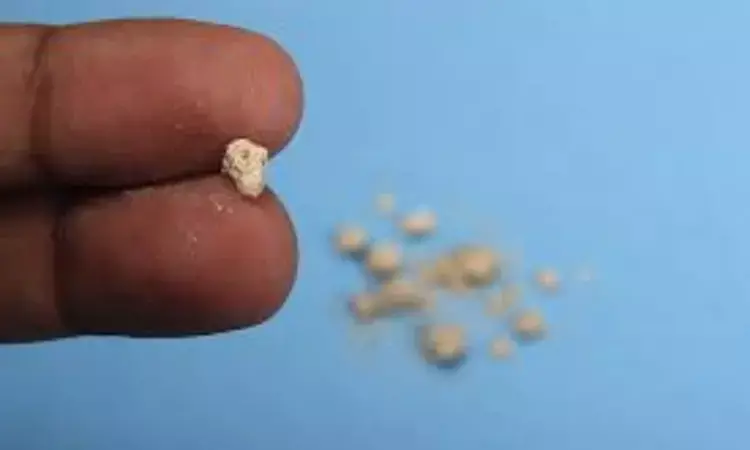- Home
- Medical news & Guidelines
- Anesthesiology
- Cardiology and CTVS
- Critical Care
- Dentistry
- Dermatology
- Diabetes and Endocrinology
- ENT
- Gastroenterology
- Medicine
- Nephrology
- Neurology
- Obstretics-Gynaecology
- Oncology
- Ophthalmology
- Orthopaedics
- Pediatrics-Neonatology
- Psychiatry
- Pulmonology
- Radiology
- Surgery
- Urology
- Laboratory Medicine
- Diet
- Nursing
- Paramedical
- Physiotherapy
- Health news
- Fact Check
- Bone Health Fact Check
- Brain Health Fact Check
- Cancer Related Fact Check
- Child Care Fact Check
- Dental and oral health fact check
- Diabetes and metabolic health fact check
- Diet and Nutrition Fact Check
- Eye and ENT Care Fact Check
- Fitness fact check
- Gut health fact check
- Heart health fact check
- Kidney health fact check
- Medical education fact check
- Men's health fact check
- Respiratory fact check
- Skin and hair care fact check
- Vaccine and Immunization fact check
- Women's health fact check
- AYUSH
- State News
- Andaman and Nicobar Islands
- Andhra Pradesh
- Arunachal Pradesh
- Assam
- Bihar
- Chandigarh
- Chattisgarh
- Dadra and Nagar Haveli
- Daman and Diu
- Delhi
- Goa
- Gujarat
- Haryana
- Himachal Pradesh
- Jammu & Kashmir
- Jharkhand
- Karnataka
- Kerala
- Ladakh
- Lakshadweep
- Madhya Pradesh
- Maharashtra
- Manipur
- Meghalaya
- Mizoram
- Nagaland
- Odisha
- Puducherry
- Punjab
- Rajasthan
- Sikkim
- Tamil Nadu
- Telangana
- Tripura
- Uttar Pradesh
- Uttrakhand
- West Bengal
- Medical Education
- Industry
Relocation of lower pole stone during retrograde intrarenal surgery fails to improve stone free rate

Relocation of lower pole stone during retrograde intrarenal surgery fails to improve stone free rate at 1 month suggests a recent study published in the Journal of Endourology.
A study was conducted to compare the stone free rate of in situ treatment versus relocation and lithotripsy for lower pole stones of less than 2 cm in size during retrograde intrarenal surgery.
This prospective randomized study was undertaken from June 2019 to May 2020 in patients undergoing retrograde intrarenal surgery for lower pole renal stones less than 2 cm in diameter. Patients were randomized into the In situ lithotripsy Group and the Relocation lithotripsy Group. In situ lithotripsy group underwent laser lithotripsy in the lower pole without relocation of calculus, and the relocation lithotripsy group had their stones relocated to a favourable location using a tipless nitinol basket followed by laser lithotripsy. The laser lithotripsy was achieved using Holmium:YAG laser ( 120Watt) with 200 µm laser fiber. Double J stent was placed in all the patients at the end of the procedure. Patient demographics, stone characteristics, operative outcomes and complications were evaluated. Stone free rate was determined at one month postoperatively with X-ray and ultrasound KUB.
The Results of the study are:
- Sixty-eight patients were included in the study, in situ group (n=35) and relocation group (n=33).
- The mean stone size and stone density were similar between the groups.
- The total operative duration, lasing duration and total energy used were similar between the groups. At one month follow up complete stone free rate was obtained 85.7% and 91% in situ lithotripsy and relocation lithotripsy group respectively (p=0.506).
Thus, relocation followed by subsequent laser lithotripsy was associated with similar stone free rate as in situ laser lithotripsy for lower pole renal calculus less than 2 cm in diameter during retrograde intrarenal surgery using Ho:YAG laser.
Reference:
Dr. Anil Shrestha, Dr. Baikuntha Adhikari, and Dr. Arvind Kumar Shah. Does relocation of lower pole stone during retrograde intrarenal surgery improve stone free rate? : A prospective randomized study. Journal of Endourology. https://doi.org/10.1089/end.2022.0050
Dr. Shravani Dali has completed her BDS from Pravara institute of medical sciences, loni. Following which she extensively worked in the healthcare sector for 2+ years. She has been actively involved in writing blogs in field of health and wellness. Currently she is pursuing her Masters of public health-health administration from Tata institute of social sciences. She can be contacted at editorial@medicaldialogues.in.
Dr Kamal Kant Kohli-MBBS, DTCD- a chest specialist with more than 30 years of practice and a flair for writing clinical articles, Dr Kamal Kant Kohli joined Medical Dialogues as a Chief Editor of Medical News. Besides writing articles, as an editor, he proofreads and verifies all the medical content published on Medical Dialogues including those coming from journals, studies,medical conferences,guidelines etc. Email: drkohli@medicaldialogues.in. Contact no. 011-43720751


